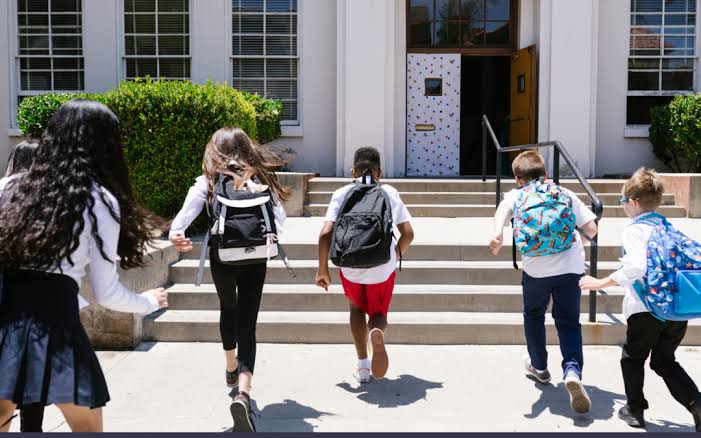Education is not merely the act of memorizing facts and numbers. Education is learning about ideas and applying them to life. When we confine learning to books only, we lose out on the very purpose of education. Experiential learning transports us away from book pages and into actuality. Experiential learning enables students to experience knowledge in a way that is personal and pragmatic. The National Education Policy 2020 focuses on the experiential learning approach. The National Curriculum Framework also endorses this method. It promotes learning that is active, engaging, and experience based.
We all recall instances when we actually comprehended something. It was not when we read it in a book. It was when we did it ourselves. A science experiment in lab class a field trip to a historical landmark a project done with our hands or even a role play activity can teach us so much more than any paragraph written in a book. Learning is best when we learn through experience. We relate to it. We tie it to our own lives. This is the power of experiential learning.
The NEP 2020 emphasizes the necessity of a transition from rote learning to competency based education. It emphasizes critical thinking creativity and problem-solving skills. These cannot be acquired by just reading a textbook. They need to be applied to real life situations. For instance a student studying ecosystems can learn more by going to a forest seeing plant and animal interactions and thinking about environmental problems. Such experiences produce long lasting knowledge that is much more precious than memorized definitions.
One of the strongest suggestions of the National Curriculum Framework is to make learning enjoyable and fun. Learning must not be a burden. It must be a thrilling experience of discovery. When students are provided with chances to explore experiment and express themselves they learn to love learning. This is the reason why most progressive schools have incorporated experiential learning into their curriculum. They employ project based learning activity-based instruction and interdisciplinary methods. These ensure that students do not only pass exams but also acquire skills that will serve them in life.
Consider mathematics for instance. Most students find numbers and formulas difficult because they perceive them as abstract. But when they use mathematics in real life situations, they realize better. When we request students to take measurements of ingredients for a recipe or the costs of travel, they appreciate how math relates to it. They start appreciating its importance. Likewise, history is not simply dates and events. As students tour historical sites examine artifacts and hear firsthand accounts they engage the past on a deeper level. It is a narrative that they can connect to, not a list of facts to memorize.
Language acquisition also has a place for experiential learning. Reading and writing are necessary but language is best acquired through interaction and immersion. Students who participate in storytelling debates dramatizations and group discussions develop greater confidence in their communication skills. They learn not only grammar and vocabulary but also how to communicate ideas effectively. This is in complete agreement with the NEP 2020 suggestion that focuses on multilingualism and communication skills.
Experiential learning promotes social and emotional growth. By working in teams, students acquire collaboration and understanding. They also acquire leadership roles and responsibility. A school sponsoring community service activities is teaching student compassion and civic duty. As students engage in these activities they realize the contributions they can make to society. They learn education is not just for individual accomplishment but also to contribute to society.
Technology has also taken a major part in experiential learning. Online simulations, virtual labs and educational games give learning an interactive feel. Augmented reality and virtual reality provide the learner an opportunity to travel through the solar system give the learner an experience of performing chemistry experiments safely or even investigate past events with an immersive experience of storytelling. According to NCF, it suggests incorporating technology for more engaging and effective learning.
The largest question is how can we make experiential learning a part of every classroom. The solution is teacher training and curriculum reform. Teachers must be given the proper tools and methodologies. They must be incentivized to move away from traditional teaching and try new things. Schools must redesign their classrooms to promote hands on activities. Assessments must be about skills application and creativity, not rote memorization.
Parents also have a role to play. They need to promote curiosity and exploration in the home. Rather than confining learning to homework and textbooks they need to engage children in activities in the real world. Cooking gardening museum visits or even basic problem-solving games can facilitate learning. If we as a society place importance on experiential learning then it will automatically become part of our education system.
The effect of experiential learning lasts long. The students who learn by experience learn better. They acquire critical thinking and problem-solving abilities. They become confident adaptable and innovative. This is the type of education that equips them for the future. It is in tune with the vision of Viksit Bharat 2047 where our education system will not only churn out degree holders but capable and responsible citizens.
As we go ahead we need to ask ourselves one simple question. Do we need students who are able to repeat answers or do we need students who are capable of thinking analyzing and innovating. The choice is obvious. We need education that transcends textbooks. We need experiential learning that enables students to comprehend apply and generate knowledge. This is the way to a brighter tomorrow.
(Writer is a Teacher, Author, Writer and Columnist Hails From Boniyar Baramulla and He Can be reached at [email protected])







